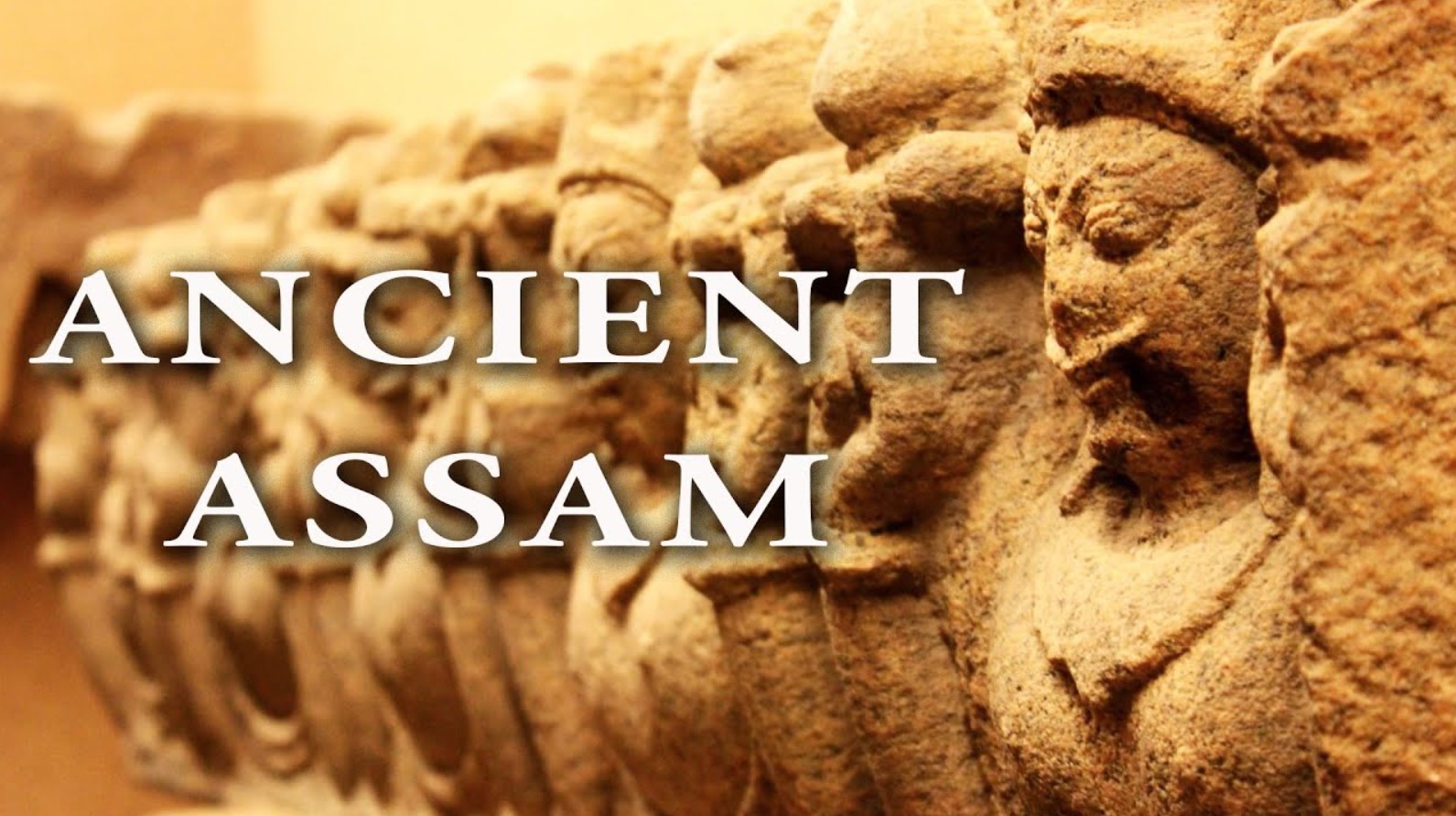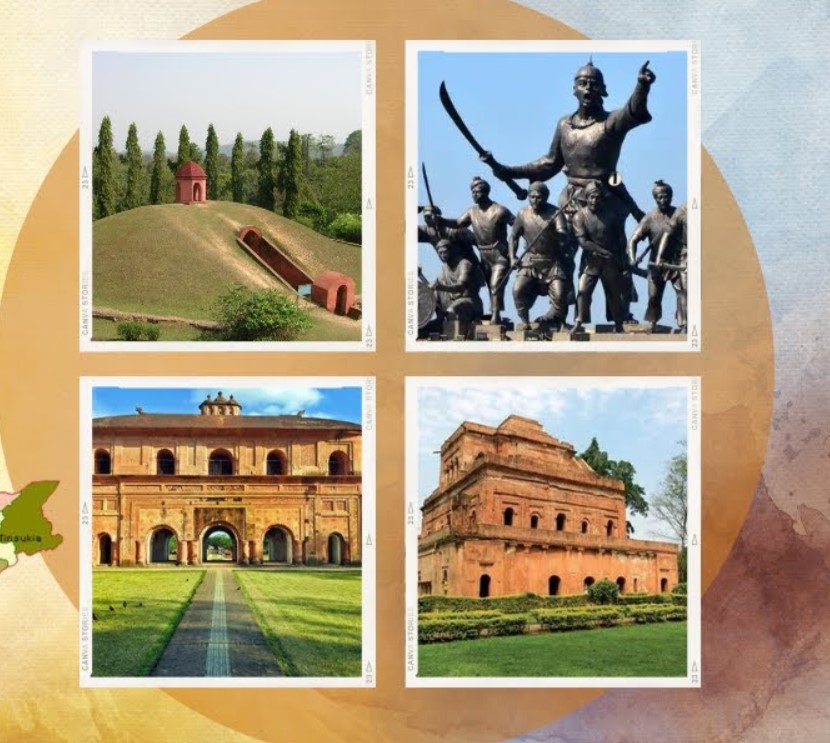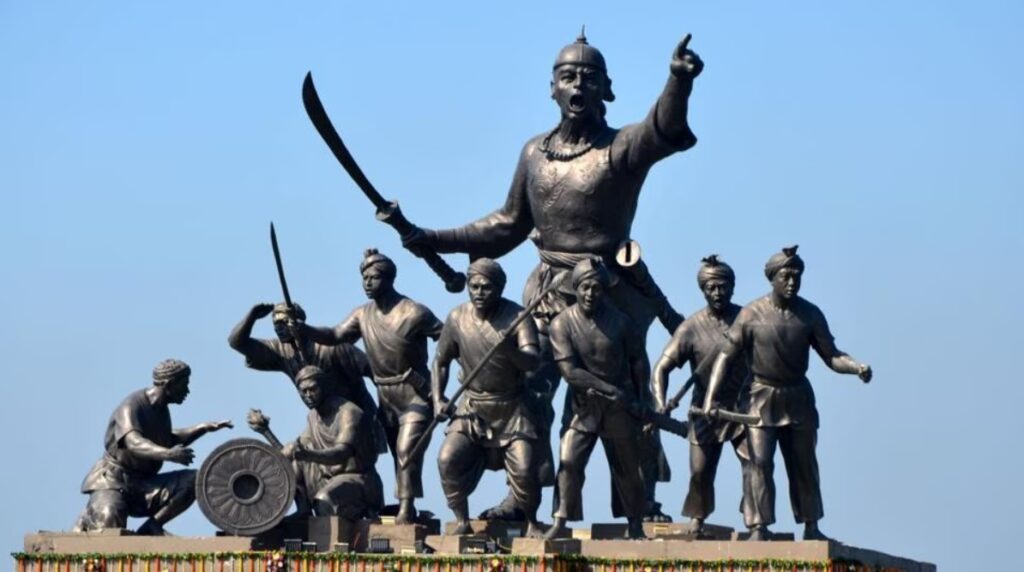Assam, a land of rich cultural heritage and breathtaking landscapes, has a history as diverse as its people. Nestled in the northeastern part of India, Assam has witnessed the rise and fall of powerful dynasties, colonial rule, and its transformation into a modern state. Understanding the history of Assam is essential to appreciating its unique identity and contributions to India’s historical and cultural fabric.
This article provides a detailed exploration of Assam’s history, covering its ancient origins, medieval era, colonial rule, and post-independence developments.
Ancient Assam: The Earliest Civilizations

Prehistoric Assam: Traces of Early Settlements
Archaeological evidence suggests that Assam was inhabited as early as the Stone Age. Excavations in Guwahati, Dibrugarh, and other regions have revealed tools, pottery, and other artifacts from early human settlements.
Key Findings:
- Stone tools from the Paleolithic and Neolithic ages.
- Cave paintings and rock carvings hinting at early civilization.
The Vedic and Epic Period: Assam in Mythology
Ancient texts such as the Mahabharata and the Puranas reference Assam, describing it as the land of the Kiratas, a warrior tribe. The Pragjyotisha Kingdom, ruled by King Narakasura and later Bhagadatta, played a role in the epic battles of Mahabharata.
Notable Mentions:
- Pragjyotishpura, the capital of ancient Assam, is mentioned in Hindu texts.
- King Bhagadatta fought in the Kurukshetra War on the side of the Kauravas.
The Rise of Pragjyotisha and Kamarupa Kingdoms
Pragjyotisha Kingdom (400 BCE – 350 CE)
- One of the earliest known kingdoms of Assam.
- Influenced by Hindu traditions and early administration.
Kamarupa Kingdom (350 CE – 12th Century CE)
- Ruled by the Varmans, Mlechchhas, and Palas dynasties.
- Expansion of temple architecture and Hindu culture.
- The famous Kamakhya Temple was built during this period.
Medieval Assam: The Age of Dynasties

Turkish and Afghan Invasions
From the 13th century onwards, Assam faced multiple invasions by the Turks and Afghans. However, native rulers such as the Chutiya, Kachari, and Baro-Bhuyans fiercely resisted these external forces.
The Ahom Dynasty (1228–1826): The Golden Era of Assam
The Ahom dynasty, founded by Sukaphaa in 1228, marked a transformative period in Assam’s history. The Ahoms ruled for nearly 600 years, shaping Assam’s administrative, military, and cultural framework.
Key Features of Ahom Rule
✅ Military Strength:
- Defeated multiple Mughal invasions.
- The Battle of Saraighat (1671), led by Lachit Borphukan, was a turning point.
✅ Administrative Reforms:
- Introduced the Paik system, an organized labor force system.
✅ Cultural Contributions:
- Promotion of Assamese literature and arts.
- Architectural marvels like Rang Ghar and Sivasagar Sivadol.
Colonial Assam: The British Takeover (1826–1947)
The Treaty of Yandabo (1826): The End of Ahom Rule
Following the First Anglo-Burmese War, the Treaty of Yandabo (1826) marked the beginning of British rule in Assam. The Ahoms lost their sovereignty, and Assam was annexed into British India.
Economic Changes Under British Rule
Introduction of the Tea Industry
- Assam became a global leader in tea production.
- British companies exploited local laborers for tea plantations.
Infrastructure Development
- Introduction of railways and road networks.
- Establishment of modern education and administration.
Freedom Struggle and Nationalist Movements
Assam played a significant role in India’s independence movement. Leaders like Gopinath Bordoloi and Chandraprabha Saikiani actively participated.
✅ Quit India Movement (1942): Assam’s youth played a crucial role in resisting British rule.
Post-Independence Assam: Challenges and Progress
Integration into India (1947–1950)
After India gained independence in 1947, Assam became part of the Indian Union. However, the partition of India led to large-scale migration and socio-political unrest.
Reorganization and Ethnic Movements
✅ State Formation:
- Meghalaya, Mizoram, and Arunachal Pradesh were carved out of Assam in the 1970s.
✅ The Assam Movement (1979–1985):
- Led by the All Assam Students’ Union (AASU) to protest illegal immigration.
- Resulted in the Assam Accord (1985) to safeguard Assamese identity.
Economic and Industrial Growth
Assam’s economy expanded with the growth of oil, natural gas, and tourism. Guwahati emerged as the commercial hub of Northeast India.
Cultural and Linguistic Heritage of Assam
The Assamese Language and Literature
- Evolved from early medieval Ahom manuscripts.
- Prominent writers: Lakshminath Bezbaroa, Bishnu Prasad Rabha.
Festivals and Traditions
✅ Bihu: Assam’s most celebrated festival.
✅ Baishagu & Jonbeel Mela: Showcasing Assam’s ethnic diversity.
✅ Vaishnavism Movement: Led by Srimanta Sankardev, shaping Assamese spirituality.
Modern Assam: Development and Future Prospects

Infrastructure and Urbanization
✅ Construction of Dhola-Sadiya Bridge, India’s longest bridge.
✅ Expansion of highways, airports, and digital infrastructure.
- Ethnic conflicts and insurgency movements.
- Controversies surrounding National Register of Citizens (NRC).
Tourism and Environmental Conservation
Assam’s Kaziranga National Park, a UNESCO Heritage Site, attracts global tourists. Conservation efforts aim to protect rhinos and wildlife diversity.
Frequently Asked Questions
What is the significance of the Ahom dynasty in Assam’s history?
The Ahom dynasty ruled Assam for nearly 600 years, resisting Mughal invasions and shaping Assamese culture.
How did British rule impact Assam?
British rule introduced tea plantations, modern education, and infrastructure but led to economic exploitation.
What was the Assam Movement?
A student-led protest (1979–1985) against illegal immigration, leading to the Assam Accord (1985).
What are some major festivals of Assam?
Bihu, Baishagu, Jonbeel Mela, and Rongali Bihu reflect Assam’s cultural diversity.
Conclusion about a comprehensive history of assam
Assam’s history is a testament to resilience, cultural richness, and political transformation. From the Ahom rule to British colonization and post-independence progress, Assam has continually evolved while preserving its heritage.


